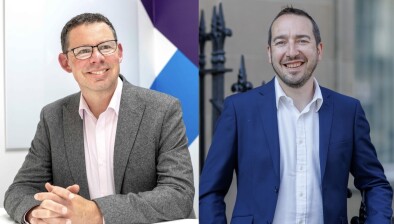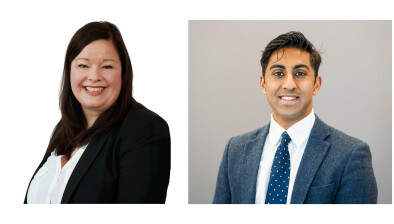Lee Fitzpatrick: How the quick hit of short-termism damages profitability

Lee Fitzpatrick
Scottish entrepreneur Lee Fitzpatrick offers suggestions of how businesses can focus on the longer-term in their digital marketing strategies.
Who wouldn’t want better sales, bigger balance sheets and a quick hit turnaround in 2021? After the year or so we’ve all had, SMEs surely deserve a break. And with a post-pandemic bounce predicted it is tempting to take the fastest route to profitability and enhance brand profile in the marketplace.
Return on investment (ROI) has become a key measure determining marketing spend success but the quest for ROI can also lead businesses to focus on quick and easy wins over long-term brand building and business outcomes.
By looking at ROI alone, marketers focus on marketing efficiency rather than marketing effectiveness – causing them great harm.
And when it becomes your guiding principle for decision making, it’s dangerous – tempting businesses to always go for the low-hanging fruit.
Digital marketing as undoubtedly fuelled a culture of short-termism, focused on customer acquisition, rather than on brand and loyalty. And, though it has revolutionised our ability to target, track and optimise campaigns (albeit through some murky, questionable data), and delivered increased efficiency, campaigns are generally becoming less effective because of a growing emphasis on ROI.
Instead, there is a more balanced approach: one that focuses on marketing effectiveness, reaching and bringing in new customers that drive longer term profitability.
Achieving this involves a combination of long-term brand building and short-term sales activation, deployed in a winning ratio.
Recent research from the Institute of Practitioners in Advertising (IPA) in the UK, The Long and the Short of It, studied the effectiveness of 1,000 campaigns over ten years and delivers insights on whether long term brand building or short-term sales activation give the best commercial returns.
Interestingly, rather than simply concluding that long-term is best, the IPA study showed that long-term brand-building and short-term activation campaigns worked best when utilised together.
The study found that on average, effectiveness seems to be optimised when around 60 per cent of the communications budget is devoted to brand building, and around 40 per cent to sales activation.
So, brand building is clearly crucial but in today’s world of budget cycles and quarterly targets, it’s obvious that sales activation is winning at the expense of brand building. Everyone wants to hit their numbers.
The issue comes from the fact that the effects of brand building and sales activation are not generated by campaigns in the same way across time:
Focusing on just short-term results does deliver the dopamine hit of sales, but they do not contribute to profit growth in the long-term. Plus, when the tap of short-term sales activation is turned off, so too are the leads and sales.
According to the IPA study, over time, an ongoing investment in a brand outperforms short-term activation, driving not just sales, but growth and profitability.
But how to avoid short-termism?
Understand the difference between short term and long-term tactics, and you are halfway there.
Short-term campaigns talk to rational needs, while brand campaigns tell stories that trigger an emotional reaction – which creates behavioural and cognitive change. Brand talks to our subconscious, sales to our conscious.
Short term tactics may include things like direct marketing, paid social, paid search, email marketing, and promotions. Whereas long term tactics will include channels such as TV, radio, website, brand marketing, PR and visual identity.
Aim for your business to have a long-term strategy
Start with the brand, never the tactics. A strong brand is distinctive and can’t be copied, whereas tactics are what everyone else is doing. Have a clear strategy centred around long-term brand building and then develop shorter sales activation campaigns to drive short term sales. A robust strategy will encourage you to think longer term and will give you a fighting chance of being more effective.
Remember that creativity is the biggest contributor to marketing effectiveness
Creativity drives so much of effectiveness – and we’ve all forgotten it in the last decade.
According to a report by Neilsen, Creative has a 47% influence on the effectiveness of advertising and outperforms any other factor. Over the past decade we have seen a focus on sales activation and distribution, but it is clear that exceptional creative work helps brands grow.
Content that lacks creative flair but is distributed well will not help brands achieve the longer- term success and profitability they desire. Trust the data and get creative!








